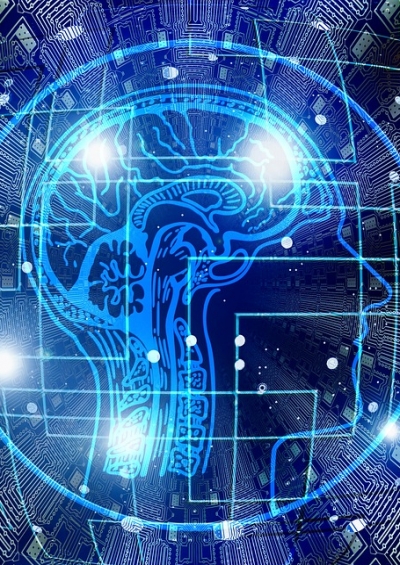The European Path to Digital Transformation
What are the mission-critical requirements for future digital business in Germany and Europe that need to be mastered?
October 21, 2018

Within the global economic system, Germany and Europe lie somewhere between the dominant digital models of China and the United States.
The Silicon Valley model is based primarily on creative destruction, that is to say, digital platforms with global reach emerge as fresh competition to established companies.
In contrast, the Chinese model relies on a home market that enjoys massive protection from the state.
The U.S. and China as the two global dominant digital models
At this time, the Chinese model is proving to be especially competitive from an economic standpoint. Fortune Global 500 companies are increasingly diversifying into Asia in particular, while their number is going down in the United States.
This could suggest that the Chinese business model based on protected domestic markets and public subsidies with a global reach and relevance is currently even more successful than the Silicon Valley business model based on creative destruction.
In the area of technological competence — including standards — as well, a further shift to the East can clearly be seen. As one data point, the number of Chinese PhDs in computer science has overtaken that of the United States.
In 2025 there will be even twice as many Chinese PhD degrees in computer science as in the United States.
The crucial factor involved in standardization is the cyber-physical system that brings together IT software components and mechanical/electronic parts. In this area, the large players with their core strengths, firms such as Google, Amazon, Huawei or Alibaba , operate system competencies in the United States and in China. They thus wield huge influence and are the de facto drivers of standardization.
This presents a clear challenge for Europe and its technological future. Defining standards and norms is undoubtedly a key factor for global relevance. In this context, one activity of global importance originating from Germany: The Industry 4.0 initiative with enormous marketing value for Industrial Internet “Made in Germany.”
Consequences for future projects in Germany and Europe
What does this mean for future projects in Germany and Europe? What are the technical developments that will fuel the technology shock going forward and that must be mastered? What alternatives exist for achieving and maintaining global relevance with businesses based in Europe?
Technologically speaking, two aspects of the mission-critical requirements for future digital business in Germany and Europe need to be mastered:
1. Understanding the technologies of the future and developing expertise in them: AS (Autonomous Systems), AIoT (Artificial Intelligence of Things) and AR (Augmented Reality) that will advance technical capabilities by orders of magnitude and therefore lie at the heart of the continual technological change.
2. Emphasis on core European specialties such as Security and Reliability. Done right, they to provide the rationale for a European differentiating factor and competitive advantage.
The European approach is not to opt for destructive capitalism as does Silicon Valley. Nor does it favor state protectionism as does China.
Instead, the European approach is based on global coverage and on digitally extending business models based on the technologies of the future and based on European skills.
These range from security, data protection, reliability, trustworthiness and providing impetus to secure infrastructures to European Smart Cities. These factors could evolve into a potent export model.
To ensure the global relevance of European contributions to value-addition, global alliances and ecosystems need to be further strengthened and utilized more intensively.
There are some examples for reference: The European Aviation Network, the fundamental work on Digital Twin in Europe and the successful establishment of internationally relevant innovation hot spots Berlin and Beersheba in Israel over the past decade.
Proper emulation matters
From a European perspective, it makes sense to copy certain successful aspects of the Californian and Chinese models. Specifically, these include a revaluation of home markets or the pursuit of national programs of excellence such as DARPA in the United States or the Talpiot program in Israel.
However, a mere emulation of the U.S. or Chinese digital models in Europe is neither sufficient nor desirable.
The task before us is to expand established businesses digitally and create global relevance through alliances and ecosystems that are competitive. As that happens, we can offer a culturally and economically suitable alternative that is attractive not only for Europe, but also for other areas of the world such as Africa and South America that would be happy to emulate the European path.
Editor’s note: This article draws on the inaugural lecture by Prof. Dr. Heinrich Arnold at the start of a master module Engineering of Digital Transformation at the Technical University of Berlin (TU Berlin). In his lecture series to be delivered in the winter semester 2018/19, he will lay out more specifics to promote a European Path to Digital Transformation.
Takeaways
Within the global economic system, Germany and Europe lie somewhere between the dominant digital models of China and the US.
The Silicon Valley model is based on creative destruction -- digital platforms with global reach emerge as fresh competition to established companies. In contrast, the Chinese model relies on a home market that enjoys massive protection from the state.
From a European perspective, it makes sense to copy certain successful aspects of the US and Chinese models. However, a mere emulation of the US or Chinese digital models in Europe is neither sufficient nor desirable.
The European approach is not to opt for destructive capitalism as does Silicon Valley. Nor does it favor state protectionism as does China.
The task before us is to expand established businesses digitally and create global relevance through alliances and ecosystems that are competitive.